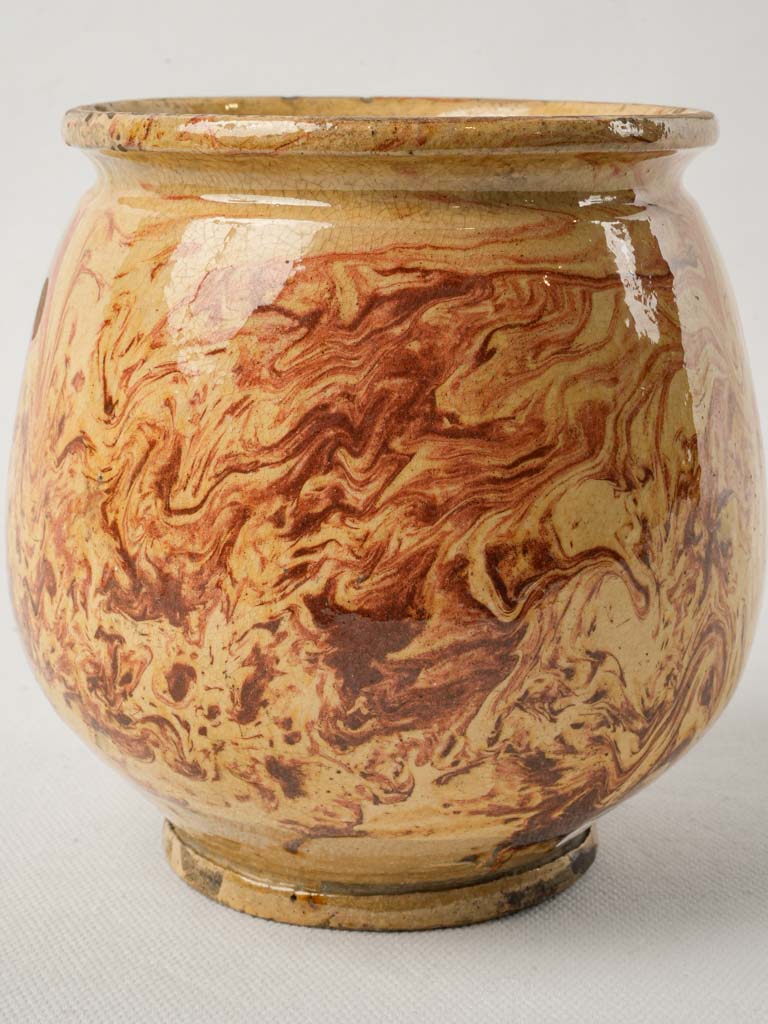
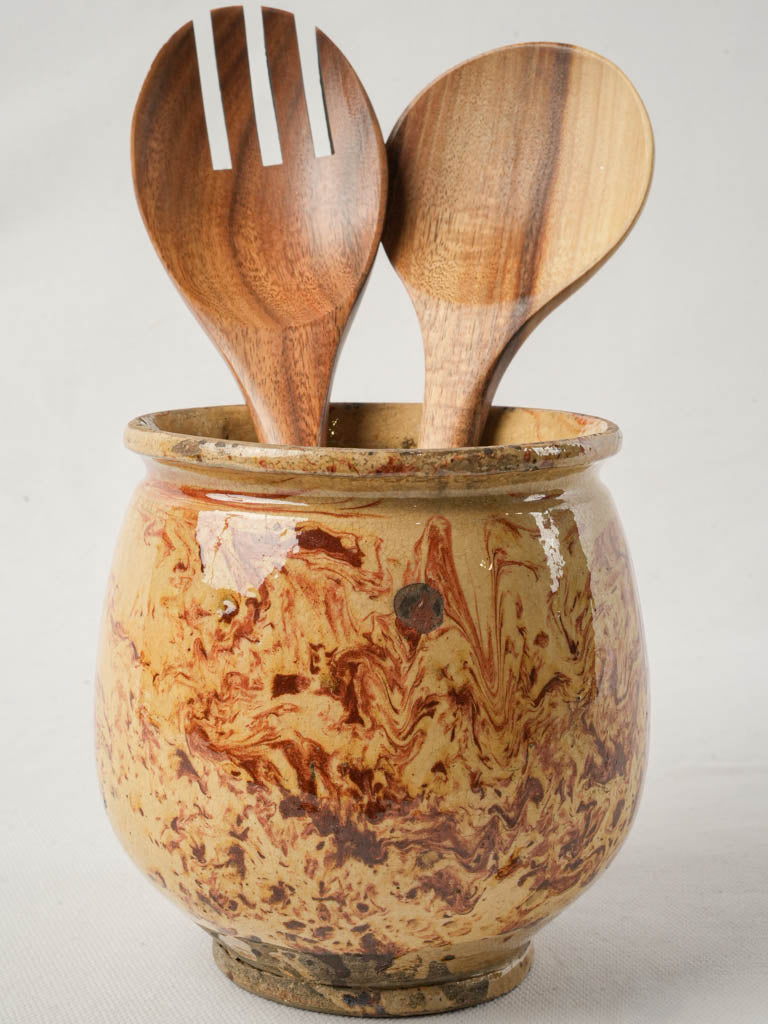
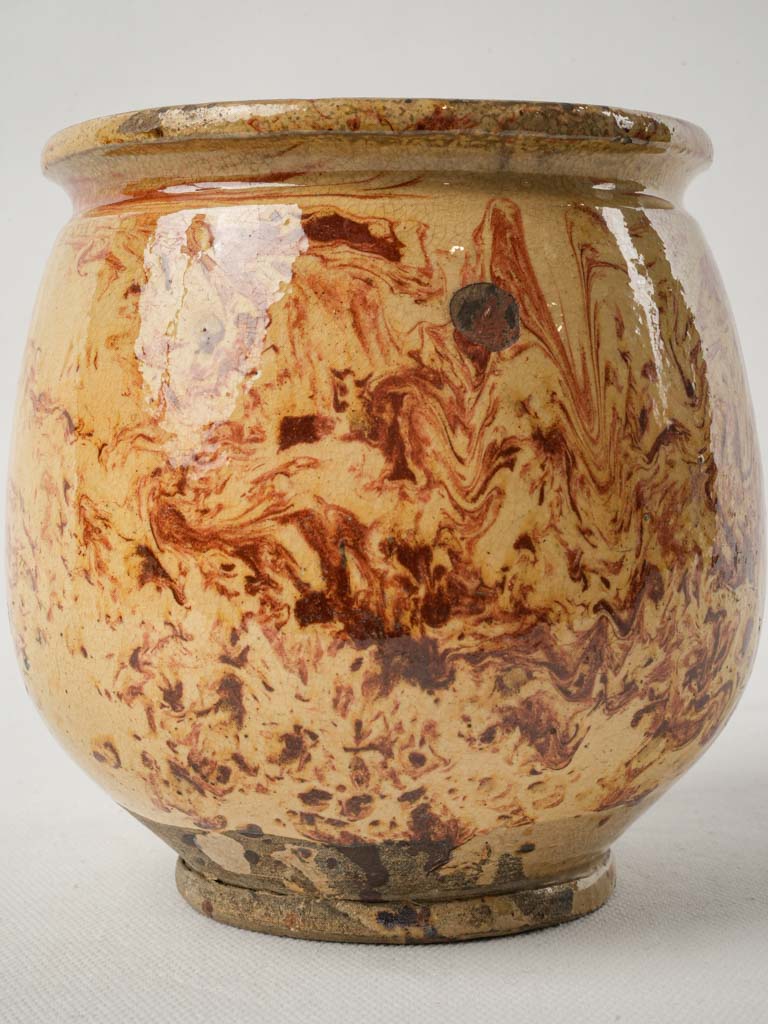
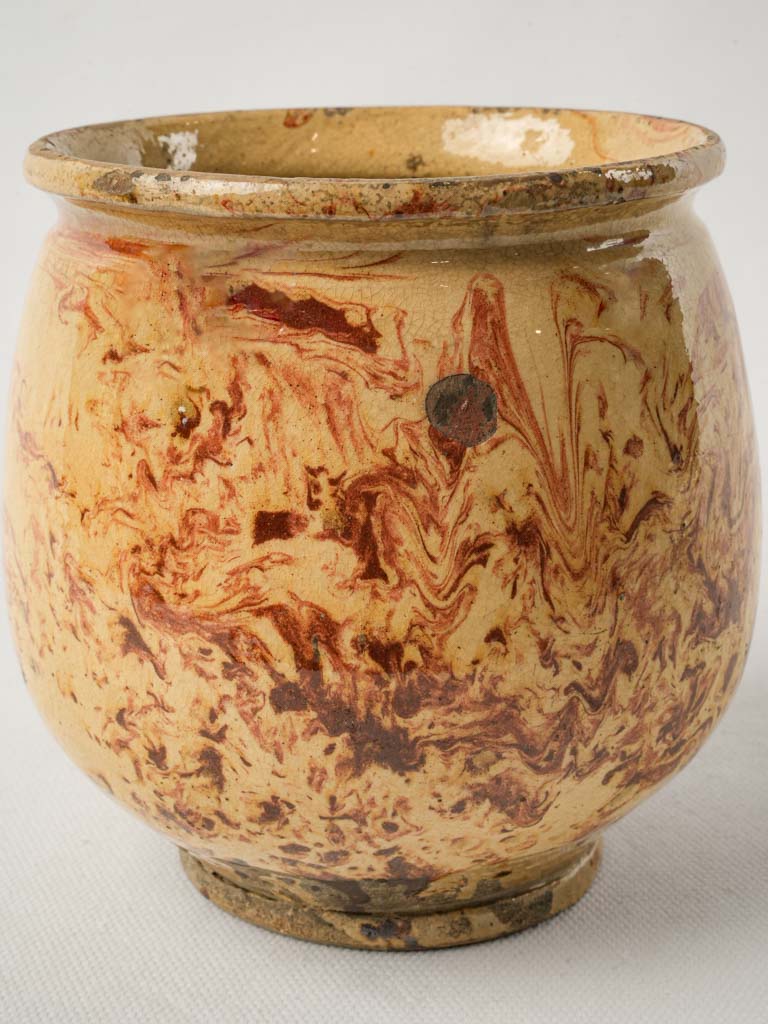
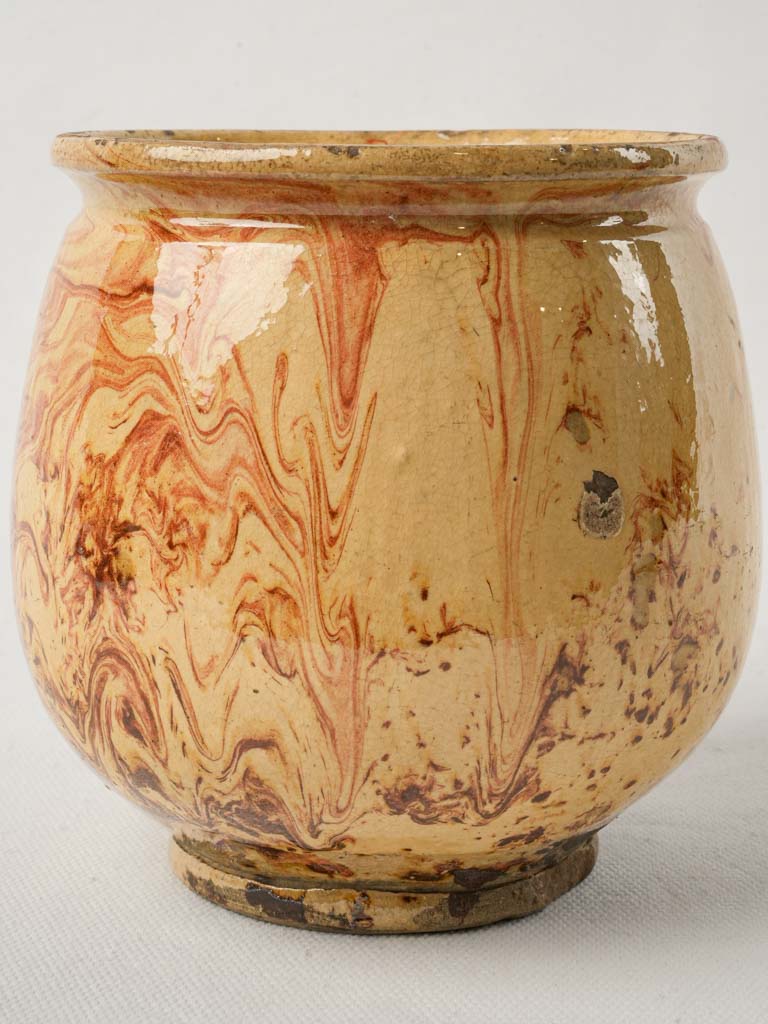
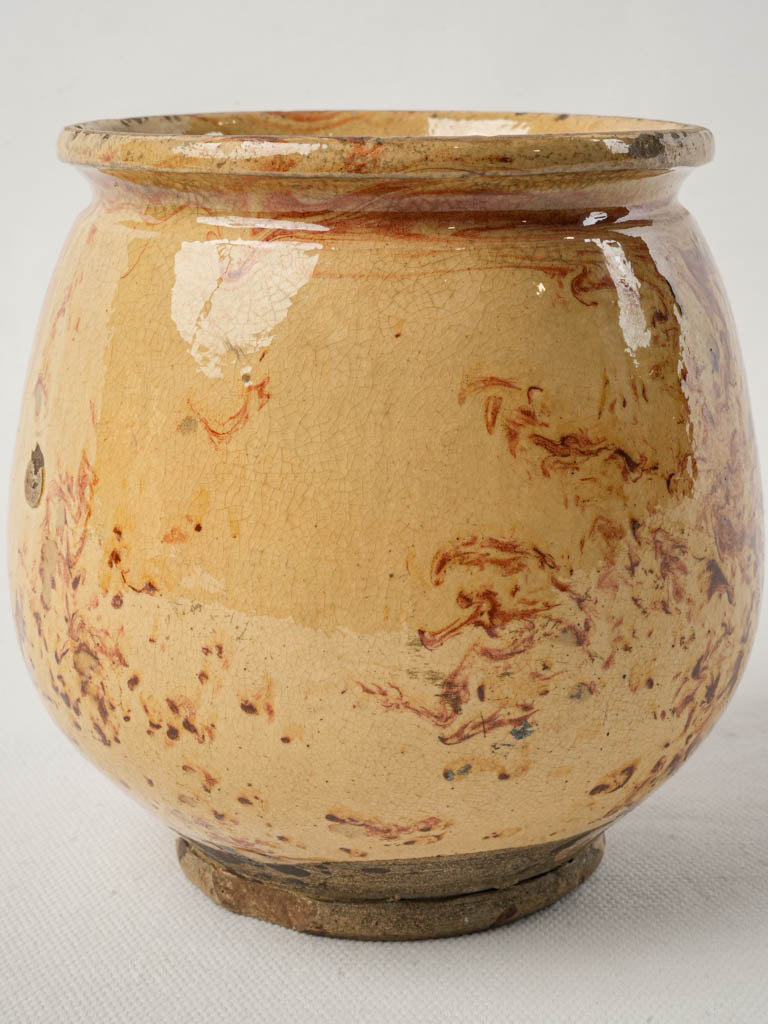
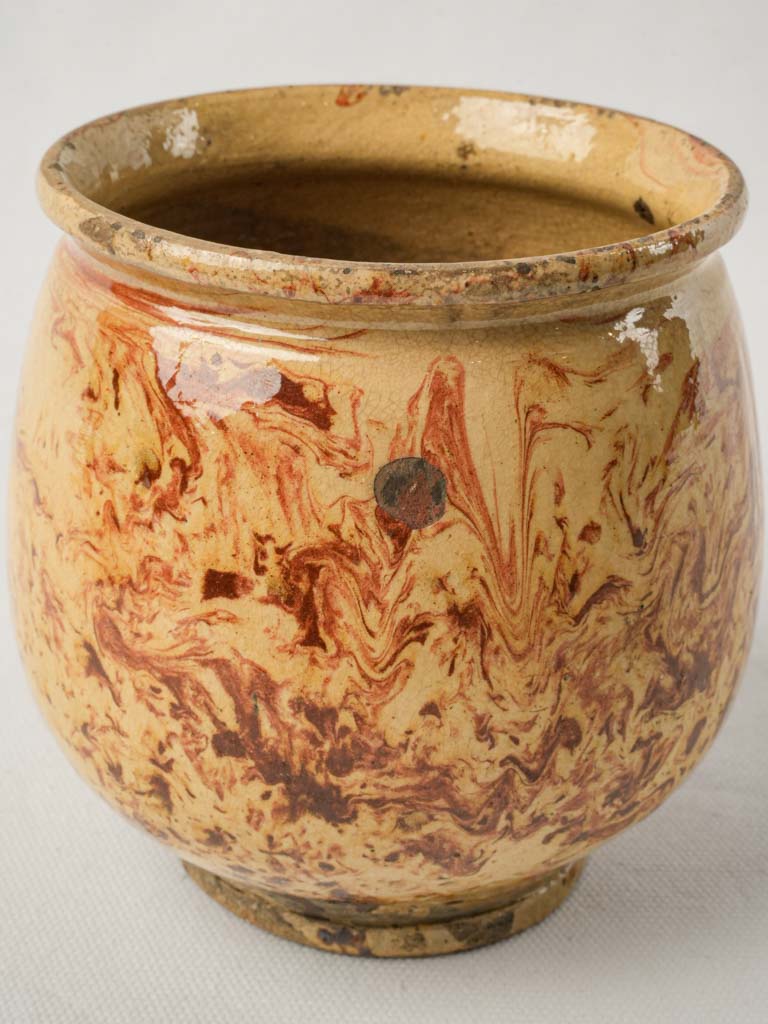
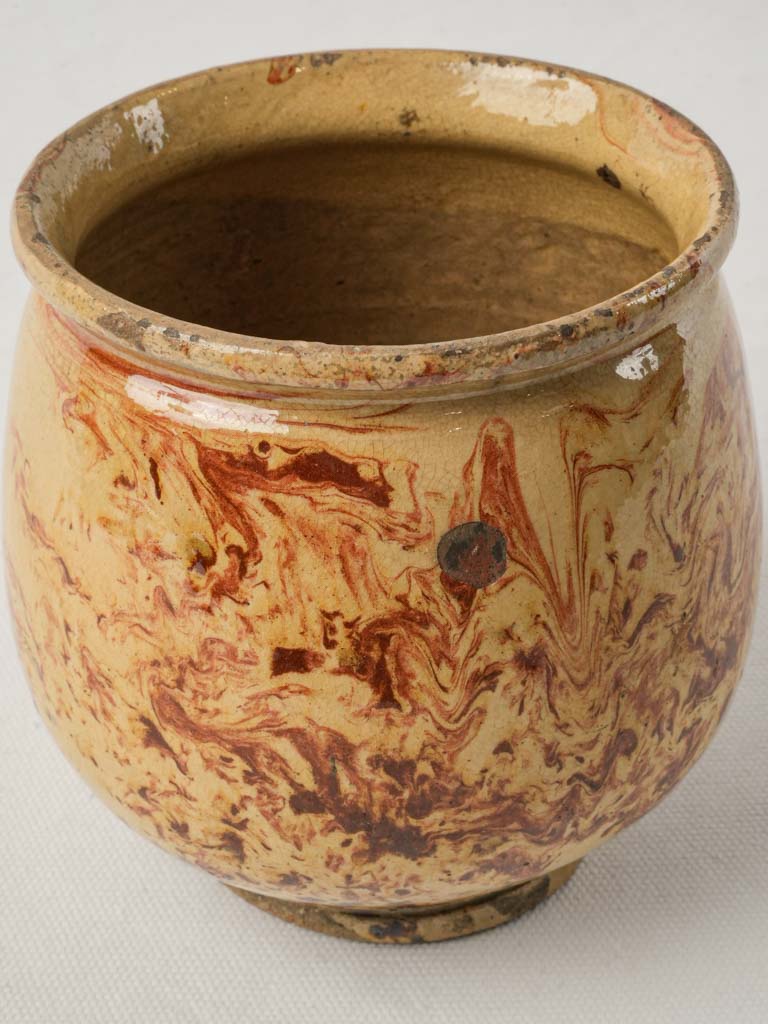
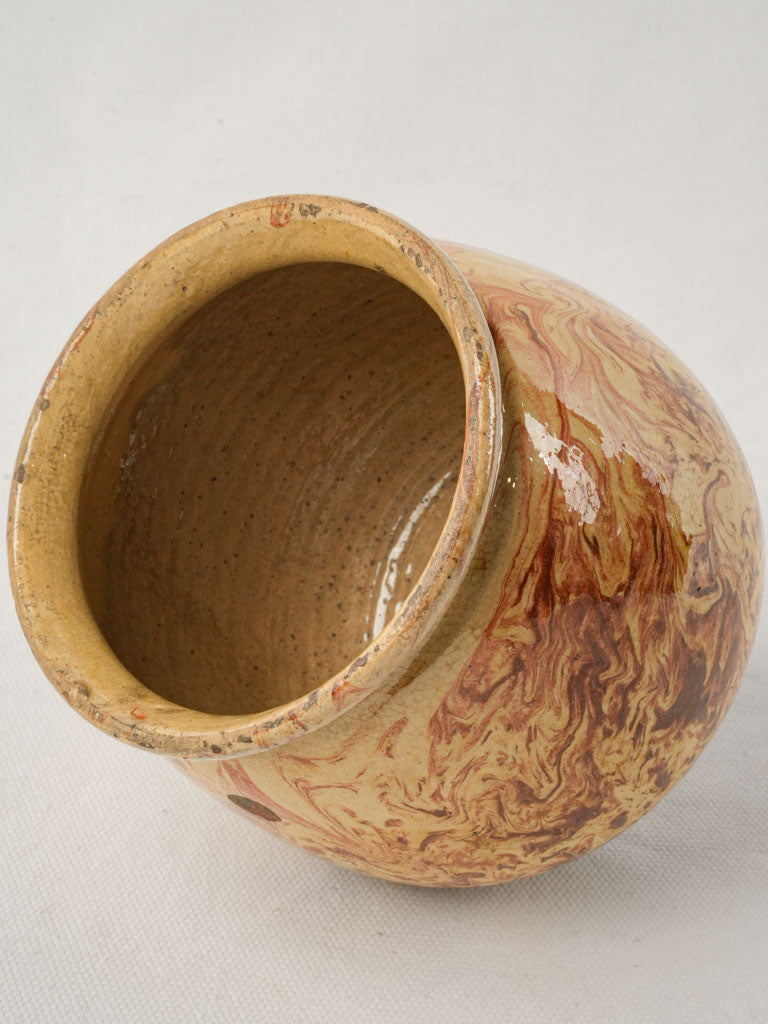
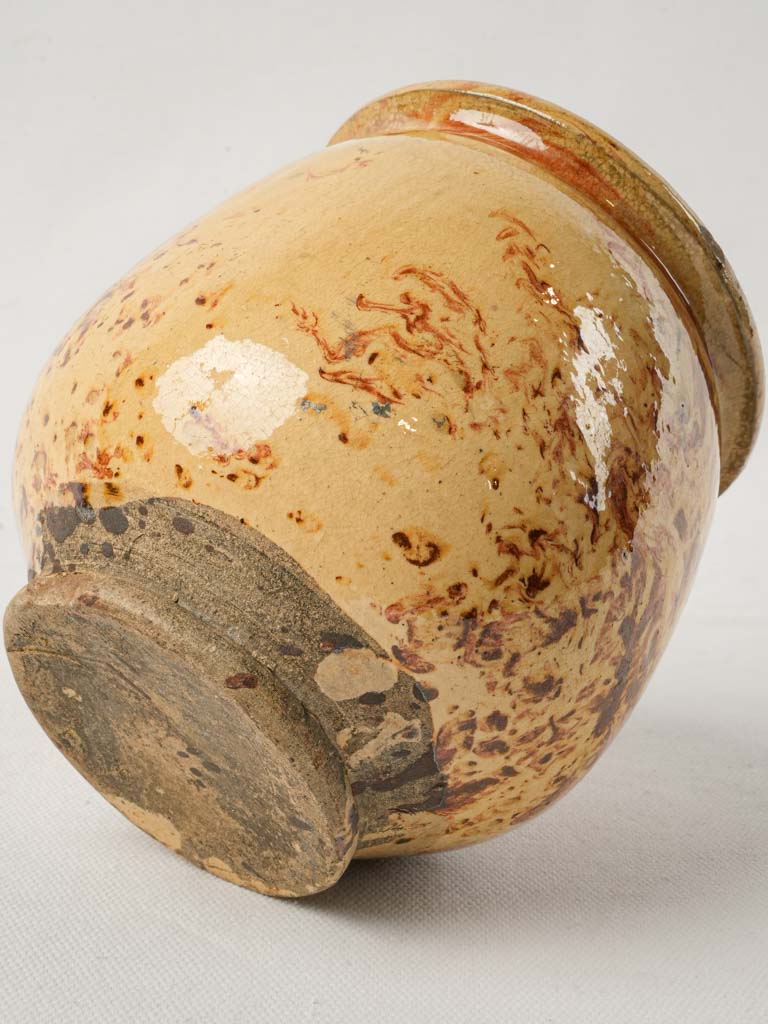
Late 19th-Century Jaspe Glazed Terracotta Pot from Vallauris - 5"
All inclusive pricing to USA
The price includes duties, taxes, tariffs and shipping. No more to pay for destinations within the US.
This late 19th-century Vallauris pot is a striking example of glazed terracotta, distinguished by its yellow and red ocher jaspe pattern. The surface exhibits a marbled effect, characteristic of the jaspe glaze technique, which involves swirling different colored slips or glazes to create a unique, textured appearance. This small pot exemplifies the craftsmanship of Vallauris, a region renowned for its pottery.
The jaspe glaze technique is a decorative method that involves layering different colored slips or glazes on a ceramic surface and then manipulating them to create a marble-like pattern. This technique results in an intricate, swirling design that varies with each piece, showcasing the artisan's skill. The use of jaspe was particularly popular in southern France during the late 19th and early 20th centuries.
Vallauris, a town in the South of France, has a long-standing history in pottery that dates back to Roman times. The area is celebrated for its rich clay deposits, which have contributed to its reputation as a pottery hub. In the 20th century, Vallauris gained international acclaim, partly due to artists like Pablo Picasso, who worked in the region. This historical backdrop highlights the cultural and artistic significance of Vallauris pottery, making items like this jaspe pot not only decorative but also culturally meaningful.
Approx. overall 5" high x 5" diameter
Approx. overall 13cm high x 13cm diameter
Approx. overall 13cm high x 13cm diameter
Choose options

